
|

 |
The design challenge of pervasive computing
14, 15, 16 November 2002 in Amsterdam |
|
 |
| Short Biographies of the Speakers |
Marko Ahtisaar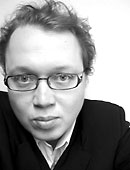 i i
As Director of user-focused activities in the Insight & Foresight Unit of Nokia, Marko Ahtisaari ‘concretises’ emerging business opportunities by identifying developments in technology, business models, and culture. He studied economics, philosophy and musical composition at Columbia University, New York City, where he subsequently lectured in logic, philosophy of economics and the history of thought. Prior to Nokia, he worked on mobiles at the design consultancy Satama Interactive, serving major clients. Marko Ahtisaari continues to make music, and was awarded a Grammy Showcase Award for new artists. |
Ton van Asseldonk
A pioneer and expert in the field of mass-individualization in services, Ton van Asseldonk works as an advisor on strategic change to a number of large Dutch enterprises. In this role, he focuses on understanding the consequences of growing unpredictability and heterogeneity, using this knowledge as a basis for developing policy in complex organisations. He will introduce Ivo Janssen’s recital of a piece by Dutch minimalist composer, Simeon ten Holt, whose work and ideas have inspired Van Asseldonk’s own ideas about the management of complexity.
Link: Mass-individualisation |
 Michael Awad Michael Awad
Architect and photographer Michael Awad, of the University of Toronto's Faculty of Architecture, Landscape and Design, has worked as an architect and curator. He is also an architectural photographer, with a client list including many of Canada's leading architectural firms, institutions and publishers. In 1997, Awad was architectural advisor and creative director of Immersion Studio's first digital panoramic film. Awad's landscape photography has recently been translated into a 300-metre-long public train station mural. His experimental urban photography has been shown at Toronto's Powerplant, Canada's leading contemporary gallery.
Link: Next Memory City |
Massimo Banzi
Massimo Banzi is Associate Professor of Technology at the Interaction Design Institute Ivrea. He has fifteen years of experience in designing and developing enterprise applications. As one of the pioneers in commercial web development in Italy, he became webmaster for Italia Online. He then spent four years in London working as technical architect and project leader for customers such as the Labour Party BT, MCI WorldCom, SmithKlineBeecham, Storagetek, BSkyB and boo.com. After returning to Italy he worked as senior technical architect for Sapient and chief technology officer of the Seat Pagine Gialle/Matrix Incubator. Mr Banzi also taught at the Masters programme in E-Business at University of Bergamo. |
 Janine Benyus Janine Benyus
The author of six books, Janine Benyus is best-known for her inspirational work, Biomimicry: Innovation Inspired By Nature. In this widely-acclaimed book, she names an emerging science that seeks sustainable solutions by mimicking nature's designs and processes (as in solar cells that mimic leaves; agriculture that looks like a prairie; or businesses that run like a redwood forest). A graduate in forestry and writing, she also lectures at the University of Montana, and works towards restoring and protecting wildlands. An educator at heart, she believes that the better people understand the genius of the natural world, the more they will want to protect it.
Link: Biomimicry |
 Ben van Berkel and Caroline Bos Ben van Berkel and Caroline Bos
In 1988, Ben van Berkel and Caroline Bos set up the Van Berkel & Bos architectural practice in Amsterdam, subsequently realizing an impressive range of projects including the Karbouw office building, the Erasmus bridge in Rotterdam, Het Valkhof museum in Nijmegen, the Moebius house, and the NMR facilities for the University of Utrecht. Current projects include the redevelopment of the station area, Arnhem, a music theatre for Graz , and the redesign of Wadsworth Atheneum Museum of Art in Hartford, Connecticut. In 1998, the pair set up a new firm: UN Studio (United Net), a network of specialists in architecture, urban development and infrastructure.
Link: UN Studio |
 Stefano Boeri, is an architect and teaches Urban Design at the Universities of Venice and Mendrisio. He is visiting professor at the Berlage Institute in Rotterdam. He writes regularly for the cultural supplement of the daily “Il Sole 24 Ore”, the major Italian financial newspaper. His studies have revolved around the problems connected with the representation of contemporary territory and, in particular, with the analysis of so-called "nebular" urban landscapes which now surround all major European cities. In discovering the characteristics and evolutionary principles of these new territories he has often collaborated with photographers and artists.. In the contemporary art exhibition Documenta XI (2002) in Kassel, Germany, Multiplicity has presented SOLID SEA, a research-Installation which aims to detect the new unpredictable nature of Mediterranean sea. His professional activity has been focused mostly on projects for the renewal of coastal areas in Southern Europe. Recently, he has been choosed to represent Italy in the Exhibition “New Trend of Architecture in Europe and Japan” (Tokyo, Porto, Rotterdam, 2001). Stefano Boeri, is an architect and teaches Urban Design at the Universities of Venice and Mendrisio. He is visiting professor at the Berlage Institute in Rotterdam. He writes regularly for the cultural supplement of the daily “Il Sole 24 Ore”, the major Italian financial newspaper. His studies have revolved around the problems connected with the representation of contemporary territory and, in particular, with the analysis of so-called "nebular" urban landscapes which now surround all major European cities. In discovering the characteristics and evolutionary principles of these new territories he has often collaborated with photographers and artists.. In the contemporary art exhibition Documenta XI (2002) in Kassel, Germany, Multiplicity has presented SOLID SEA, a research-Installation which aims to detect the new unpredictable nature of Mediterranean sea. His professional activity has been focused mostly on projects for the renewal of coastal areas in Southern Europe. Recently, he has been choosed to represent Italy in the Exhibition “New Trend of Architecture in Europe and Japan” (Tokyo, Porto, Rotterdam, 2001).
Link: Multiplicity
|
 Joshua Davis Joshua Davis
New York artist and technologist Joshua Davis produces work on and off the web, but remains best-known for his site Praystation (www.praystation.com), which won the 2001 Prix Ars Electronica Golden Nica in the category "Net Excellence", the highest honour in international net art and design. Nominated as one of the IPPA’s Ten Most Creative People in 2000/2001, he is the author of Flash to the Core (New Riders), and has recently released the Praystation Year 2 CD-ROM (distributed by You Work for Them). He is currently an instructor at the School of Visual Arts in New York City, lectures around the world, and will be judging A Flash of Blue, a flash competition sponsored by Skyy Blue. He also has plans to start a studio with Branden Hall (co-author of Object-Oriented Programming with ActionScript).
Link: praystation.com |
 Luis Fernández-Galiano Luis Fernández-Galiano
An architect, Madrid School of Architecture professor, and editor of the journals Arquitectura Viva and AV Monographs, Luis Fernández-Galiano also writes on architecture for Spain’s leading newspaper, El Païs. He has been Cullinan Professor at Rice University, a visiting scholar at the Getty Center of Los Angeles, and a visiting critic at Princeton, Harvard and the Berlage Institute. He has been a jury member for several national and international competitions, including the Mies van der Rohe European Award. MIT Press has recently published his book, Fire and Memory: On Architecture and Energy.
Link: Arquitectura Viva |
 Felice Frankel Felice Frankel
Science photographer Felice Frankel is a research scientist at the Massachusetts Institute of Technology and Director of the Envisioning Science Project. Working in collaboration with scientists and engineers, Frankel creates images for journal submissions, presentations, and publications for non-specialist audiences. A fellow of the American Association for the Advancement of Science, she co-authored (with George M. Whitesides) On the Surface of Things, Images of the Extraordinary in Science (Chronicle Books). Her latest book is "Envisioning Science, the Design and Craft of the Science Image". (MIT Press).
Link: Felice Frankel at MIT |
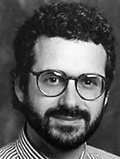 Neil Gershenfeld Neil Gershenfeld
As Director of the Center for Bits and Atoms at the MIT Media Laboratory, Neil Gershenfeld’s unique research group investigates the relationship between the content of information and its physical representation, from molecular quantum computers to virtuoso musical instruments. Technology from his laboratory has been used in settings from Las Vegas to rural Indian villages and Inuit reindeer herds. He is the author of the best-selling books, When Things Start To Think, The Nature of Mathematical Modeling, and The Physics of Information Technology.
Link: Neil Gershenfeld at MIT |
 J C Herz J C Herz
As principal of Joystick Nation Inc., a research and design practice that applies the principles of complex systems to the design of products, services, and brands, J C Herz draws on ecology, online social dynamics, computer games, and information theory to focus on human-human interaction design, and systems that leverage the intrinsic characteristics of networked communication. She sits on the National Research Council’s Committee on Creativity and Information Technology, and the Defense Advanced Research Project Agency’s study group on patterns of emergent behaviour in massively multiplayer persistent worlds. She is the author of Surfing on the Internet (Little Brown), an ethnography of cyberspace before the web, and Joystick Nation: How Videogames Ate Our Quarters, Won Our Hearts, and Rewired Our Minds (Little, Brown), a history of the first medium that was born digital.
Link: New York time essays by JC Herz (registration required). |
 Lars Erik Holmquist Lars Erik Holmquist
The leader of the Future Applications Lab at the Viktoria Institute in Göteborg, Sweden, Lars Erik Holmquist develops innovative technology to make life more interesting and fun. Grounded in innovative design methods and open-ended user studies, the Future Applications Lab develops and studies the applications that could become part of everybody's lives – perhaps sooner than we think. Research will result in prototypes which can be quickly deployed to real users, and which will push the technological envelope in many areas. He also chairs UbiComp 2002, the premier ubiquitous computing event.
Link: Future Appliciations Lab |
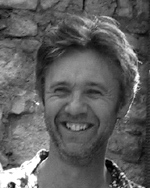 Ivo Janssen Ivo Janssen
After studying with Jan Wijn at the Sweelinck Conservatory in Amsterdam, pianist Ivo Janssen went on to win a number of prizes, including the Jacques Vonk Prize, which allowed him to continue his studies abroad with Robert Levin and others. Following his début in the Concertgebouw in Amsterdam in 1988, Ivo Janssen has performed regularly in the Netherlands, Germany, France, Italy, Australia and the USA. For Globe, Ivo Janssen made a number of recordings, including works by Brahms, Prokofiev, and Chopin, as well as Hindemith’s Ludus Tonalis, which the Hindemith Institute considers the best recording by far of this work.
Link: www.voidclassics.com |
Natalie Jeremijenko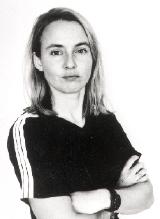
Australian engineer and designer Natalie Jeremijenko reclaims technology from the abstract realm of cyberspace and applies it to the messy real world. In her project Stump, for example – a software programme which rewards users with tree rings each time a tree’s worth of paper is used – she highlights our delusion that computers mean ‘paperless’ offices. Based in America, she teaches at Yale University and the School of Visual Arts, New York. She has worked as a researcher on ubiquitous computing at Xerox PARC in California, and with the Tangible Media Group at MIT Media Lab in the development of tangible user interfaces.http://jove.eng.yale.edu/feralrobots |
 Derrick de Kerckhove Derrick de Kerckhove
The Director of the McLuhan Program in Culture and Technology, and Professor of French at the University of Toronto, Derrick de Kerckhove worked with Marshall McLuhan for ten years as translator, assistant and co-author. His next book, McLuhan for Managers, in collaboration with Mark Federman, will be published next spring. He is also writing a book about the history of stage performance, from early Greek theatre to modern opera, in collaboration with Francesco Monico. As a consultant in media, cultural interests, and related policies, Derrick de Kerckhove is working on a major exhibition on Canada and Modernism at the Cité des sciences et de l’industrie, Paris, for 2004, and was a member of the cultural committee of Toronto’s 2008 Olympics bid.
Link: Architecture of Intelligence |
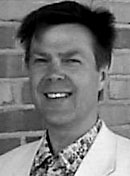 Roland Lahti Roland Lahti
The environmental manager of Telia's Corporate Communications Business Area, Roland Lahti is the initiator of the CommIT project, which involves utilizing information-technology (IT) aids and implementing practical communications measures in order to make corporate life simpler, more sustainable and more economic. The project unites the largest companies in the area, Nacka Strand Förvaltning, Telia, Ericsson and Apoteksbolaget, in a variety of initiatives. Purchasing services jointly, for example, means that one delivery truck can be used, instead of several, resulting in reduced environmental impact.
Link: Nacka Strand project |
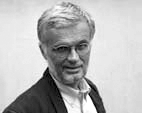 Ezio Manzini Ezio Manzini
The Professor of Industrial Design at Milan Polytechnic, where he is Director of CIRIS (the Interdepartmental Centre for Research on Innovation for Sustainability), Ezio Manzini is an acknowledged expert on the design of services. He is also the author of such classic design books as The Material of Invention, Artefacts: Towards a New Ecology of the Artificial Environment, and (with Marco Susani) Solid Side: The Search for Consistency in a Changing World. He spent 2001 in China, where he set up a design for sustainability network (that includes Doors).
Link: Milan Polytechnic |
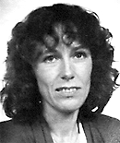 Patricia de Martelaere Patricia de Martelaere
In her book What Remains, rising star of European philosophy Patricia de Martelaere asks what we can and should sustain in a world of processes of perpetual change and becoming. She teaches at the universities of Brussels and Louvain, and also writes fiction; her novels and essays have received major prizes. Her latest collection of essays, Wereldvreemdheid (Unworldliness) appeared in 2000. In 2001, she made an impressive début as a poet in the Belgian literary magazine, De Gids.
Link: Centre for Logic, Philosophy of Science and Philosophy of Language |
Irene Mavrommati and Achilles Kameas
Working closely together on ubiquitous computing component architectures, experience designer Irene Mavrommati and computer scientist Achilles Kameas lead a team within computer tech institute, CTI/RU3. Their group conceptualises and develops innovative ubiquitous infrastructures for projects such as e-Gadgets (an IST/FET project of the Disappearing Computer Initiative). As a team, they address a wide area of issues, from computer science to design to human perception, that are raised in ubiquitous computing applications. |
 Malcolm McCullough Malcolm McCullough
The author of Abstracting Craft, which has become a classic of digital design, Malcolm McCullough will shortly publish Digital Ground, a new book on location awareness in the age of ubiquitous computing. After pioneering computer-aided design in architecture in the 1980s, McCullough taught at Harvard for many years before migrating into the emergent field of human-computer interaction. Following a short residence at Xerox PARC, and two years in the human-computer interface design community at Carnegie Mellon, he is now a faculty member of the University of Michigan.
Link: Taubman College of Architecture and Planning and School of Art and Design
|
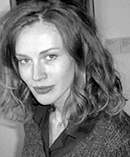 Franziska Nori Franziska Nori
Curator of Digital Craft at the Museum of Applied Arts (MAK) in Frankfurt since 2000, Franziska Nori’s hit exhibition, I Love You, explored the worlds of hackers and viruses in a museum context. In 1998, she was appointed by the European Commission to deliver an appraisal of future strategies for European museums working with new media. Prior to this, she worked as an independent curator of modern and contemporary art, at the Schirn Kunsthalle Frankfurt, the Museum für Moderne Kunst in Vienna, the Museo Nacional Reina Sofia in Madrid, and the Fundación la Caixa in Palma de Mallorca.
Link: Digital Craft |
 Michiel Post Michiel Post
An expert in digital sound reproduction and sampling, Michiel Post has worked with conductors and composers including Ricardo Chailly, Stockhausen, and Pierre Boulez. In 1999, he set up the company Post Audio Media, specialising in digital music samples, and produced award-winning sound libraries of harpsichords, church organs and orchestral instruments. In 2001, he founded a second company, Post Musical Instruments, which has produced the Post Piano, a composers’ tool that reproduces classical instruments with incredible realism, and the Grandioso series of piano sound libraries. This now includes a Steinway D concert grand (using over five gigabytes of samples to capture every nuance of this suberb instrument), and the Bosendorfer 290.
link: www.postmusicalinstruments.com
|
 David Rokeby David Rokeby
The work of David Rokeby, a Toronto-based installation artist and winner of Canada's 2002 Governor General's Award in Visual and Media Arts, reflects his interests in visual perception, language, surveillance, and the human body's relationship with technology. These works have been exhibited extensively in a range of international venues. His pioneering installation, Very Nervous System, has evolved into a system used by composers, video artists, and medical facilities in many parts of the world. In September 2002, Rokeby was awarded the Prix Ars Electronica Golden Nica, the most prestigious international prize for interactive art.
Link: David Rokeby |
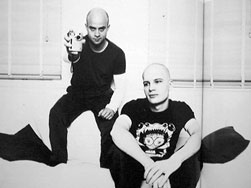 Michael Schmidt and Tole Nygaard Michael Schmidt and Tole Nygaard
This award-winning Danish duo are web developers, designers, self-confessed “all-around sauerkraut munchers,” and the founders of Kaliber10000, (www.k10k.net), a cool hub for the world’s web design community. Together with technical wizard Per Jørgensen, they also created Moodstats – an innovative piece of emotional software which allows users to record and analyse their moods on a daily basis. Having founded the web company Cuban Council, they are now based in San Francisco, where they share offices with Futurefarmers. Here, they spend their time doing designy things, fiddling around with unfinished personal projects, and “trying not to get too heavily involved with ‘The Man’”, whatever that means.
Link: Kaliber 10000 |
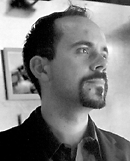 Aditya Dev Sood Aditya Dev Sood
As the founder and director of the Center for Knowledge Societies, Bangalore, Aditya Dev Sood heads a research organisation investigating the socio-cultural and politico-economic effects of emerging technologies. Through the documentation, research and analysis of new technology initiatives, the institution aims to develop planning and consultancy resources for different developmental agents. Sood is a 2001 Fulbright scholar, and is also completing a doctorate at the University of Chicago. With a number ofpublications, awards and fellowships to his credit, he maintains a multidisciplinary interest in technology, design, education and social science.
Link: Center for Knowledge Societies |
 Felix Stalder Felix Stalder
A post-doctoral fellow with the Surveillance Project, a transdisciplinary research initiative based in the Department of Sociology, Queen's University in Kingston, ON, Canada, Felix Stalder is also a co-founder and director of Openflows, a project in participatory media and "open source intelligence" based, partially, in Toronto. His research interests focus on how new social, political, and economic dynamics emerge around new communication technologies. Openflows emerged from several years of practice in developing collaborative networks online, both for research and for media activism in the broad sense of the word.
Link: Openflow.org |
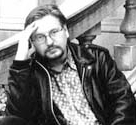 Bruce Sterling Bruce Sterling
Author, journalist, editor, and critic, Bruce Sterling is also leader of the Viridians – an online ecological design community. He has written eight science fiction novels, and edited the anthology Mirrorshades, the definitive document of the cyberpunk movement. He also wrote the non-fiction book The Hacker Crackdown: Law and Disorder on the Electronic Frontier (1992), available electronically on the Internet. He has written regular columns on popular science and literary criticism for The Magazine of Fantasy and Science Fiction, Interzone, and Science Fiction Eye.
Link: Viridian Design |
 Marco Susani Marco Susani
Trained as an architect, Marco Susani is a product, interaction and strategic designer. In October 2000, he became Director of the Advanced Concepts Design Group of Motorola, based in Cambridge, USA, working on the future of mobile networked communication. In this role, he applies a design-oriented vision to the evolution of the product portfolio of the company. He was advisor to the European Union’s FET (Future and Emerging Technology) research program, on the theme of Interaction and Media Design, and was co-writer of the research scheme Connected Community for the Icubed program. From 1993 to 2000, he was director of the Domus Academy Research Center, involved in design projects and research on strategic and media design. |
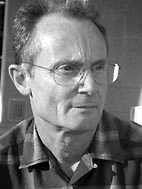 Philip Tabor Philip Tabor
While studying architecture at Cambridge University, Philip Tabor wrote a PhD thesis on computer analysis of communications flows in buildings. As an architect he practised architecture in offices of Sam Zisman and O’Neill Ford (Texas) , and Leslie Martin and Colin StJohn Wilson, Michael Brawne, and James Stirling (England). Later, he became a partner with Edward Cullinan Architects.Formerly Philip Tabor was Editor, Journal of Architecture and Planning Research; Professor of Architectural Criticism and Theory, University College London; and Director of the Bartlett School of Architecture. Currently Visiting Professor in Architecture at University College, he commutes between London and Piedmont.
Link: Visiting Professor
|
 John Thackara John Thackara
John Thackara is director and firstPerceptron of Doors of Perception (Doors) in Amsterdam. He designs projects, learning events, and organisations, that enable innovation. A former journalist and publisher, john Thackara was the forst director of the Netherlands Design Institute. He is a member of the Virtual Platform, a body that advises the Dutch government on cultural and innovation policy. He is on the steering committee of the Interaction Design Institute Ivrea, in Italy, and the Scientofic Committee of the Interactive Institute in Sweden; is a member of Hong Kong's Design Task Force; and is on the co-ordinating group of Convivio, the new european research network for social computing. Among his books are Design after Modernism (1987), Lost in Space (1995), Winners! How succesful Companies Innovate by Design (1997), and In The Bubble, Designing in a Complex World (forthcoming, 2003).
http://www.doorsofperception.com
http://www.thackara.com |
 Axel Thallemer Axel Thallemer
Trained as an engineer, Axel Thallemer founded Festo Corporate Design in 1994 and has headed that department ever since, transforming Festo into a truly global brand. Prior to this, he worked as a design engineer in the styling studio of Porsche, initiating the introduction of the computer-aided styling process. He has received numerous awards, especially for his Fluidic Muscle, which won Japan’s Good Design Award in 1998, and Germany’s Federal Award for Product Design in 2000, among many others.
Link: Air Power |
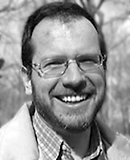 Jakub Wejchert Jakub Wejchert
As Coordinator of the EU’s Disappearing Computer project, Jakub Wejchert’s objective is to explore how everyday life can be supported and enhanced through the use of collections of interacting artefacts. Together, these artefacts will form new people-friendly environments in which the computer-as-we-know-it has no role. The aim is to arrive at new concepts and techniques out of which future applications can be developed. Specifically, the initiative focuses on three objectives: developing new tools and methods for the embedding of computation in everyday objects; researching how new functionality and use can emerge from collections of interacting artefacts; and ensuring that people's experience of these environments is both coherent and engaging in space and time.
Link: The Disappearing Computer |
 Gill Wildman and Ellie Runcie Gill Wildman and Ellie Runcie
Two design managers from the Design Council, UK, Ellie Runcie and Gill Wildman fill complementary roles. Ellie Runcie is Development Manager in the Design Council’s business team. Her work involves developing and building the Sharing Innovation Business Network, a network of the UK's most innovative businesses. She is also responsible for pioneering and managing the Design Council's work on e-business. Gill Wildman is involved in developing industry tools and methods used to manage the design process. She works to ensure that tools are fit for their purpose, easy to use, and relevant.
Link: The Design Council |
|
|
 |
 |
|
 |

 |
|
 |
|
|